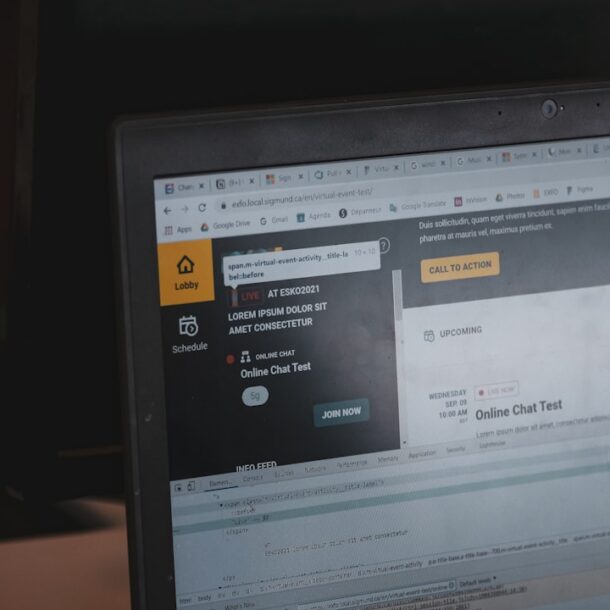
Close
Managing a remote development team presents unique challenges due to the lack of physical presence. Team members may experience isolation and difficulty building rapport, potentially impacting working relationships. Time zone differences can complicate coordination and collaboration, potentially causing project delays.
Maintaining motivation and engagement among remote team members can be challenging, as they may feel disconnected from the broader team and company objectives. Remote team management requires a high degree of trust and autonomy. Team members must effectively manage their time and tasks without direct supervision, which can be difficult for those struggling with self-discipline.
Communication relies heavily on digital tools, which may lead to misunderstandings or misinterpretations. Leadership and management approaches must be adapted for remote teams. Performance assessment and feedback provision require alternative methods in the absence of physical observation.
Building team culture and fostering collaboration become more complex in a remote environment. Managers must recognize these challenges and adjust their strategies to ensure the remote development team’s success.
When setting goals for remote team members, it’s important to make them specific, measurable, achievable, relevant, and time-bound (SMART). This helps ensure that everyone understands what is expected of them and how their performance will be evaluated. Additionally, it’s important to communicate these goals clearly and regularly, using various communication channels such as video calls, emails, and project management tools.
Setting clear expectations for remote team members involves establishing guidelines for communication, availability, and deliverables. Managers should clearly outline the preferred communication channels and response times, as well as any specific deadlines or milestones that need to be met.
By setting clear expectations from the outset, managers can help remote team members understand what is required of them and how they can contribute to the team’s success. This helps prevent misunderstandings and ensures that everyone is aligned with the team’s objectives, ultimately leading to a more productive and successful remote development team.

Effective communication is essential for the success of any team, but it becomes even more critical when managing a remote development team. Without the ability to have face-to-face interactions, remote team members rely heavily on digital communication tools to collaborate and stay connected. Implementing effective communication strategies is crucial for ensuring that remote team members feel engaged, informed, and supported.
One effective communication strategy for remote teams is to establish regular check-ins and meetings. This provides an opportunity for team members to connect with each other, discuss project updates, and address any challenges or concerns. Regular meetings also help create a sense of routine and structure, which can be beneficial for remote team members who may struggle with feelings of isolation.
Another important communication strategy for remote teams is to leverage various communication channels. While email may be the primary mode of communication for some teams, others may benefit from using video calls, instant messaging platforms, or project management tools. By using a combination of communication channels, managers can ensure that remote team members have multiple ways to connect with each other and access important information.
Furthermore, it’s important to encourage open and transparent communication within the team. Remote team members should feel comfortable sharing their ideas, asking for help when needed, and providing feedback on their work. Creating a culture of open communication helps foster trust and collaboration among team members, leading to better outcomes for the team as a whole.
Building a strong team culture and fostering collaboration is essential for the success of any development team, whether they are working remotely or in an office setting. However, when managing a remote development team, it’s important to be intentional about creating opportunities for team members to connect and build relationships. This helps prevent feelings of isolation and disconnection among remote team members.
One way to establish a strong team culture in a remote development team is to create opportunities for virtual social interactions. This could include virtual coffee breaks, team-building activities, or informal video calls where team members can chat about non-work-related topics. These interactions help build rapport among team members and create a sense of camaraderie, despite not being physically present in the same location.
Fostering collaboration among remote team members involves creating opportunities for them to work together on projects and share their expertise. This could include pairing up team members on specific tasks, organizing virtual brainstorming sessions, or creating collaborative spaces within project management tools where team members can share ideas and provide feedback. By fostering collaboration, managers can help remote team members feel more connected to each other and invested in the success of the team as a whole.
Furthermore, establishing a strong team culture involves clearly defining the team’s values, goals, and expectations. This helps create a sense of identity and purpose among remote team members, guiding their actions and decisions as they work towards common objectives. By fostering a strong team culture, managers can help remote development teams overcome the challenges of distance and build a cohesive and high-performing team.
Leveraging the right tools and technologies is essential for supporting the productivity and collaboration of remote development teams. With the right tools in place, remote team members can effectively communicate, share information, and collaborate on projects despite being physically dispersed. It’s important for managers to invest in the right tools and provide training on how to use them effectively.
One essential tool for remote development teams is a reliable project management platform. This allows team members to track project progress, assign tasks, set deadlines, and share important documents in one centralized location. Project management tools also provide visibility into each team member’s workload and progress, helping managers assess performance and allocate resources effectively.
Another important technology for remote development teams is video conferencing software. Video calls provide an opportunity for face-to-face interactions among remote team members, helping build rapport and strengthen relationships. Video conferencing also allows for more effective communication compared to audio calls or written messages, as it enables non-verbal cues to be observed during conversations.
Additionally, collaboration tools such as shared document repositories, instant messaging platforms, and virtual whiteboards are essential for supporting teamwork among remote development teams. These tools allow team members to collaborate in real-time, share ideas, provide feedback, and access important information from anywhere in the world. By leveraging the right tools and technologies, managers can help remote development teams overcome the challenges of distance and work together seamlessly towards common goals.
One effective way to manage remote team performance is by setting clear performance goals and expectations. This involves defining key performance indicators (KPIs) for each team member based on their role and responsibilities. By setting clear expectations from the outset, managers provide remote team members with a roadmap for success and help them understand how their performance will be evaluated.
Another important aspect of managing remote team performance is providing regular feedback and coaching. Managers should schedule regular one-on-one meetings with each team member to discuss their progress, address any challenges they may be facing, and provide constructive feedback on their work. These meetings provide an opportunity for managers to support their remote team members’ professional growth and address any performance issues in a timely manner.
Furthermore, it’s important for managers to trust their remote team members while also holding them accountable for their work. This involves giving team members autonomy over their tasks while also providing support and guidance as needed. By trusting their remote team members to manage their own time effectively, managers can empower them to take ownership of their work and deliver results while working remotely.
Nurturing professional development and growth within a remote development team is essential for retaining top talent and ensuring the long-term success of the team. Remote team members may sometimes feel disconnected from opportunities for career advancement or skill development compared to their in-office counterparts. It’s important for managers to be proactive in providing support and resources for professional growth within their remote development teams.
One way to nurture professional development within a remote development team is by providing access to training and skill-building opportunities. This could include offering online courses, workshops, or certifications related to their field of expertise. By investing in their professional development, managers show their commitment to supporting their remote team members’ career growth.
Another important aspect of nurturing professional development within a remote development team is providing opportunities for mentorship and coaching. Managers should pair up junior or less experienced team members with more senior colleagues who can provide guidance, share knowledge, and offer career advice. Mentorship programs help foster a sense of community within the remote development team while also supporting individual growth.
Furthermore, it’s important for managers to have regular career conversations with their remote team members. This involves discussing their career aspirations, identifying areas for growth or improvement, and creating a plan for achieving their professional goals. By having open conversations about career development, managers can help their remote team members feel supported in their professional growth journey.
In conclusion, managing a remote development team comes with its own set of challenges that require careful consideration and proactive solutions. By understanding these challenges, setting clear goals and expectations, implementing effective communication strategies, fostering collaboration, leveraging the right tools and technologies, managing performance and productivity effectively, and nurturing professional development within the team, managers can create a high-performing remote development team that delivers exceptional results despite being physically dispersed.
If you’re looking to build a high-performing remote development team, you may also be interested in creating a stress-busting content calendar. This article outlines five steps to help you plan and organize your content in a way that reduces stress and increases productivity for your team. By implementing these best practices, you can ensure that your remote team is not only efficient in their development work, but also in their content creation and management.
Some best practices for building a high-performing remote development team include setting clear expectations, fostering open communication, providing the right tools and technology, promoting a healthy work-life balance, and offering opportunities for professional development and growth.
Clear expectations help remote development team members understand their roles and responsibilities, which can lead to improved productivity, better collaboration, and a stronger sense of accountability.
Open communication is essential for remote development teams to stay connected, share ideas, address challenges, and build strong working relationships. It can help prevent misunderstandings and promote a positive team culture.
High-performing remote development teams require reliable communication tools, project management software, version control systems, and other technology that facilitate collaboration, streamline workflows, and support remote work.
Promoting a healthy work-life balance can help remote development team members avoid burnout, stay motivated, and maintain their overall well-being, which can ultimately lead to higher job satisfaction and better performance.
Offering opportunities for professional development and growth can help remote development team members enhance their skills, stay engaged, and feel valued, which can contribute to the overall success of the team.
Augmented Team Pvt Ltd

